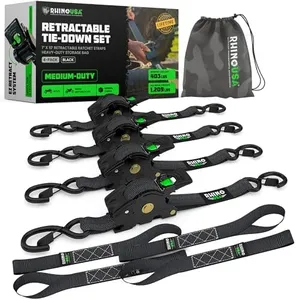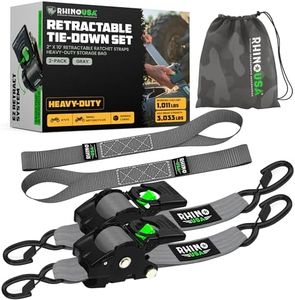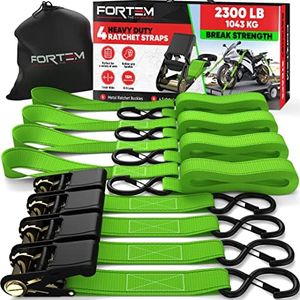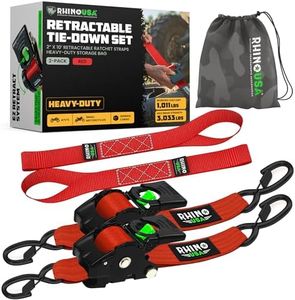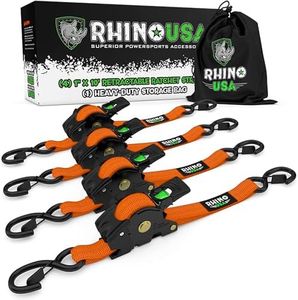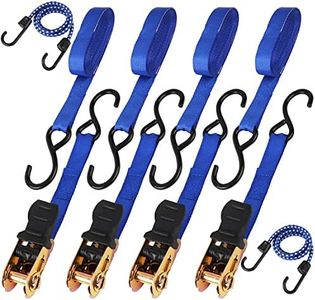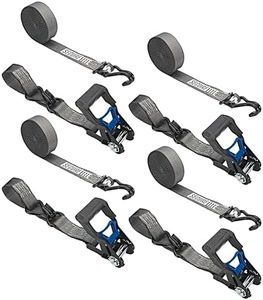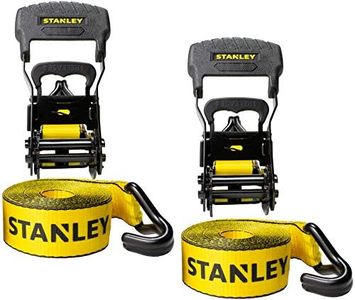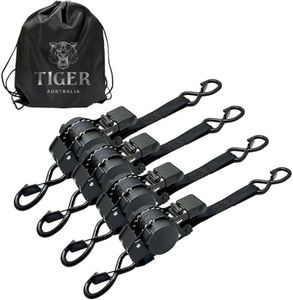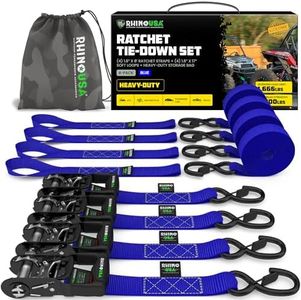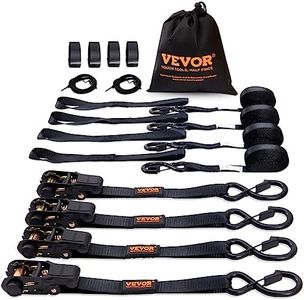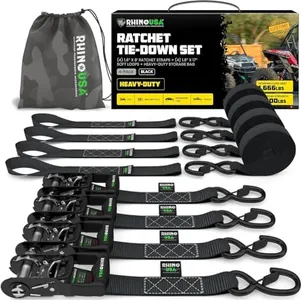We Use CookiesWe use cookies to enhance the security, performance,
functionality and for analytical and promotional activities. By continuing to browse this site you
are agreeing to our privacy policy
10 Best Ratcheting Tie Downs
From leading brands and best sellers available on the web.By clicking on a link to a third party's website, log data is shared with that third party.
Buying Guide for the Best Ratcheting Tie Downs
Ratcheting tie-downs are essential for securing loads during transportation, whether you're moving furniture, outdoor equipment, or anything else that needs to stay put in a vehicle or on a trailer. The right tie-down will ensure your cargo is safe and prevent shifting or damage on the road. When selecting a ratcheting tie-down, understanding the key specifications will help you choose a product that suits your needs and provides both convenience and safety.Working Load Limit (WLL)The working load limit (WLL) is the maximum weight you should safely secure with a particular tie-down. It's crucial because it tells you how much load the tie-down can handle without failing. WLL ratings typically range from a few hundred pounds to over a thousand pounds. Lighter-duty tie-downs (under 500 pounds) are suitable for securing bikes or small equipment, while medium-duty (500-1,000 pounds) work for furniture or appliances and heavy-duty (over 1,000 pounds) are best for ATVs, vehicles, or large loads. Always match the WLL to the heaviest item you'll be securing to ensure safe and effective usage.
Strap LengthStrap length determines how far your tie-down will stretch from one anchor point to another, which is vital for larger objects or wide vehicles. Straps come in various lengths, typically from 6 feet up to 30 feet or more. Short straps (6-12 feet) are ideal for compact loads in pickup beds, while medium (12-20 feet) are appropriate for mid-sized trailers or multiple items, and long straps (20+ feet) help secure bulky or oversized cargo. Choose a length that comfortably fits your load with a bit to spare for tensioning, but avoid overly long straps if unnecessary, as they can create slack and be harder to manage.
Strap WidthThe width of the strap affects both its strength and its ability to grip and protect your cargo. Common widths range from 1 inch up to 2 or even 4 inches. Narrow straps (around 1 inch) are great for light to moderate loads and are easy to manage, while wider straps (2 inches or more) provide more holding power and are better for heavy or unwieldy loads. Pick a strap width based on both the weight and type of items you're securing—wider straps are gentler on delicate surfaces and distribute pressure more evenly.
Hook TypeHooks at the ends of ratcheting tie-downs connect to anchor points on your vehicle or trailer. There are several common types, such as S-hooks, flat hooks, and snap hooks. S-hooks are versatile and simple to use, handy for most standard anchor points. Flat hooks are better for trailer edges or stake pockets, while snap hooks add security by preventing accidental release. Consider the anchor points you'll be attaching to and choose hooks that are compatible and provide the level of security you need.
Ratcheting Mechanism QualityThe ratcheting mechanism is what allows you to tighten and lock the strap in place. A smooth, durable ratchet is important for safe and easy operation. Look for mechanisms that feel solid, operate without sticking, and provide good leverage. Light, plastic ratchets might be fine for occasional use but may not hold up under frequent stress, whereas all-metal ratchets are better for heavy-duty or regular jobs. If you’ll be using tie-downs frequently or with heavy loads, prioritize a robust ratcheting system for both ease and safety.
Strap MaterialMost ratcheting tie-downs use polyester or nylon webbing. Polyester is favored because it resists stretching when wet and is durable against UV and abrasion, which makes it reliable for outdoor and repeated use. Nylon can be a bit stretchier and might not offer the same UV resistance, but it's strong and flexible. If your tie-downs will be exposed to the elements or used frequently, polyester is usually the best choice; nylon may suffice for indoor, light, or occasional use.
